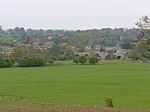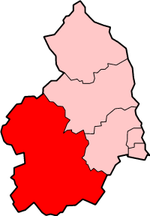Humshaugh () is a parish near Hexham in Northumberland, England. The village had a population of 622 in the 2011 census, and is just north of Chollerford, which is located near Chesters Fort (Cilurnum) on Hadrian's Wall and is about 21 miles west of Newcastle upon Tyne. The village of Humshaugh lies just off the military road running from Newcastle to Carlisle which was built by General Wade during the 1745 Jacobite rebellion. Other nearby villages include Low Brunton and Walwick. Humshaugh is usually pronounced Humz-hoff, although some genuine locals have been heard calling it Humz-haff.
The paper mill near Humshaugh, on the River North Tyne close to Barrasford, among other mills in various rural locations around England, was used during the Napoleonic Wars to make the paper that was used to print fake French money in a bid to flood France with the forged notes, which was intended to cause a marked devaluation of the currency.
It is also attributed as the site of the first official Scout camp, held in August 1908, a year after the more famous experimental camp on Brownsea Island. Humshaugh was a large Parish, before sub division, and the Scouts took the train to Chollerford, the nearest station to Humshaugh, and walked up through Walwick and the woods to the site, which is known as Look Wide! The actual site is on land belonging to Park Shields Farm (grid reference NY 885 697), near to Fourstones, and is now marked by a cairn commemorating the event.









